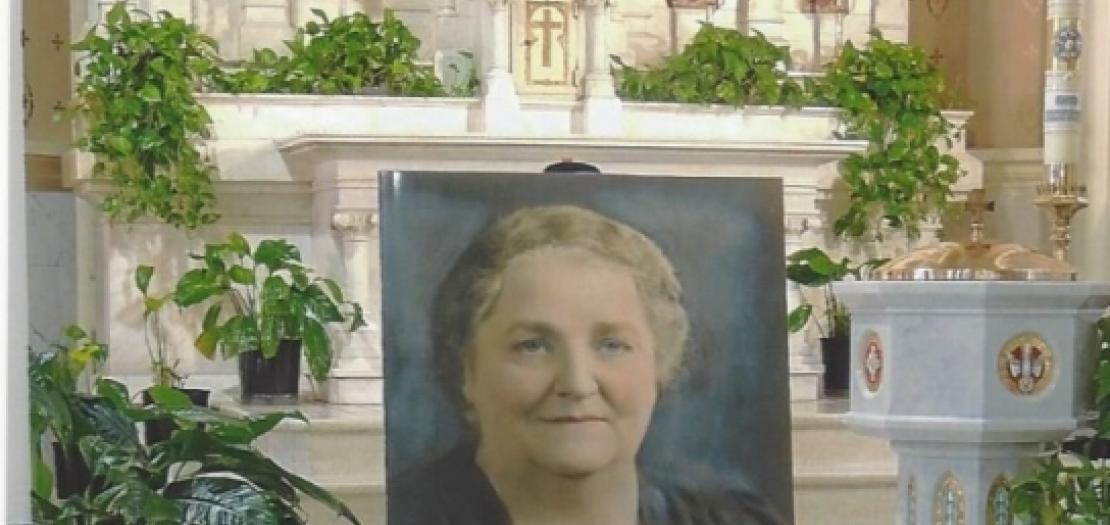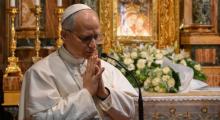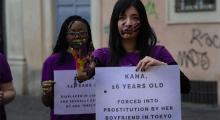Issued by the Catholic Center for Studies and Media - Jordan. Editor-in-chief Fr. Rif'at Bader - موقع أبونا abouna.org

On October 7, 2016, the Diocese of Youngstown, Ohio, formally opened the cause of beatification and canonization for Rhoda Wise. The quiet, unassuming housewife had lived in the working-class neighborhood of Canton until her death from high blood pressure at age 60 on July 7, 1948. She suffered many illnesses, including a 39-pound tumor, abscesses, wounds that wouldn’t heal and a permanent injury to her ankle.
Then, on May 28, 1939, purported miracles began: healings, visits from Jesus and St. Thérèse, and the stigmata. Following her own two unexplained healings, Wise took on new sufferings, offering them up for priests and conversions.
People began flocking to see Wise, and many purported miracles were attributed to her intercession. When she died, more than 14,000 people attended her funeral. According to Karen Sigler, general manager of the Rhoda Wise Shrine, located in Wise’s home, visitors have not stopped coming.
Occasional media attention increases traffic, such as the Fox 8 local news story in 2014 and, earlier, due to the release of the biography of EWTN foundress Mother Mary Angelica authored by EWTN News lead anchor and managing editor Raymond Arroyo, who reported that Rita Rizzo had been healed of a chronic stomach condition after visiting Wise when she was 19 years old. Canton was Mother Angelica’s hometown, too.
Rhoda’s Life
Her Name Means Rose: The Rhoda Wise Story recounts a difficult life. Born in 1888, the sixth of eight children from a working-class Protestant family, Rhoda became a widow at age 28, after only six months of marriage, when her husband died of a cerebral hemorrhage.
She married George Wise Jan. 27, 1917, and they adopted a baby girl who died before her first birthday during a flu epidemic. In 1922, George and Rhoda adopted their only other child, Anna Mae.
Rhoda loved George, but his alcoholism was a burden on their marriage. Then she developed a huge ovarian cyst, and in 1931, surgery led to severe infections that necessitated other surgeries. She could not sleep or even move much, but she prayed with the Mercy sisters at Mercy Medical Center, who taught her to pray the Rosary.
Wise grew especially close to Sister Clement, who introduced her to St. Thérèse of Lisieux, the “Little Flower.” They prayed a novena to St. Thérèse together every night. Through the sister’s influence, Wise was received into the Catholic Church Jan. 1, 1939.
Five years after the cyst was removed, Rhoda twisted her right ankle, which led to severe problems, confining her to a cast. The condition of her abdomen also continued to worsen. There was so much scarring; her abdomen could not be closed properly; and, then, doctors discovered cancer.
‘Hopeless’ Case and Meeting Jesus
On Feb. 12, 1939, Wise’s doctor explained there was no hope for a cure and sent her home. She wrote in her diary: “They say suffering and trouble only bring us nearer to God, and I know I am close to him, but I want to be closer still.”
It was in her bedroom, May 28, 1939, that Jesus reportedly appeared to her. She described the visit in her diary: “Our Blessed Lord appeared to me as I lay awake in bed at my home. The room, which had been dark, suddenly became bright, and when I turned around in bed to see the cause of it, I beheld Jesus sitting on a chair beside my bed.
“I distinctly saw the marks of his forehead where the thorns had pieced his brow. He was gloriously beautiful and was robed in a gold garment, which reflected every color.”
Wise asked Jesus if he had come for her. “No, your time has not come yet,” he said, according to her diary entry, and then explained he would return in 31 days.
On June 28, 1939, Wise recorded in her diary that Jesus came, this time with St. Thérèse. The saint put her hand on Rhoda’s stomach, and she was completely healed. Jesus told her he would return again.
Wise wrote in her diary later that year that on Aug. 15, the Solemnity of the Assumption of the Blessed Virgin Mary, St. Thérèse came and told her to stand up and walk. Even though her foot was supposed to be in a brace until Nov. 10, Rhoda stood up, and the cast broke. She could immediately walk. In her diary, Rhoda was joyful about the faith her miracles brought to others: “Everyone around me says they will never doubt God again.”
The greatest miracle of all, according to Rhoda, occurred when her husband George quit drinking “cold turkey” after himself seeing Jesus. He had gone to bed, and everywhere he looked, Jesus was there. Jesus said nothing. According to George: “He didn’t have to.”
Beginning on Good Friday, April 3, 1942, and every First Friday afterward, marks like a crown of thorns appeared on Rhoda’s head from noon to 3pm, and blood came forth from her eyes. Jesus told her in a vision June 2, 1942: “To save souls, one must suffer.” She later received the stigmata — the wounds of Christ — on her hands and feet.
‘This Place Is to Be a Shrine’
On April 3, 1940, Jesus told Wise: “This place is to be a shrine, and cures more wonderful than your own will take place on this spot.” After Rhoda died in 1948, her daughter Anna Mae continued to welcome visitors to the home, and reports of cures also continued. Anna Mae died in 1995. She bequeathed the home to Mother Angelica, and it became the property of Our Lady of the Angels Monastery, which Mother Angelica founded. When Wise’s shrine was incorporated as a nonprofit in 2014, ownership was returned to the shrine.







